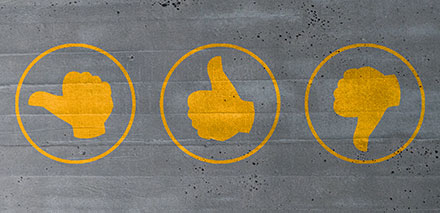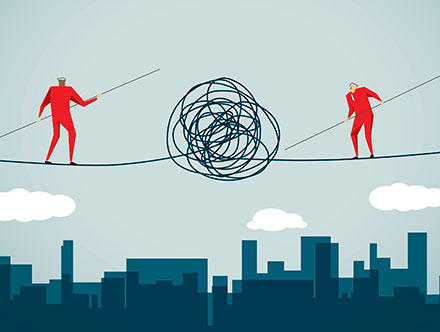Brainstorming: Team Up or Go It Alone?
The benefits of mixing up your team sizes to get the most out of a brainstorming session.

We all have different work styles, unique skills, and perspectives that we bring to the table when we start the brainstorming process. But what’s the best way to pattern our activities to get the best results from a brainstorming team?
Start by acknowledging that not everyone’s mind works the same way. Some people need to learn all the facts and then ruminate without distraction. Others need the excitement of interaction with others to spark a new thought. Use this to your advantage. Different sized groups can be beneficial at different parts of the process.
Isolated
Before any brainstorming session, you should identify at least one task you want your participants to think about before they arrive at the meeting. Using research and their own knowledge they can generate ideas around one topic without any influence from others in the group. By being completely isolated in this part of the process, they won’t weight ideas based on what others think, just on what their particular perspective tells them is most important. This is also great for bringing out thoughts from people who aren’t good at speaking off-the-cuff, but still have good ideas.
Individual
A step away from isolated work is individual work within a brainstorming session. Provide an activity for your participants to engage in alone. The dynamic is a bit different than the homework because they are surrounded by teammates working on the same task in the same place. Also, there should be a bit of discussion about the goals for the project at the beginning of the meeting and the different perspectives of the group. At the end of the activity, have participants share what they’ve generated. This is where you can see overlap and dissension within your group.
Small group
The next option is a small team of 3–5 people working together on generating ideas. You might group them around their particular lens or unite people from different parts of the organization, depending on your goals. This size introduces group interaction including more discussion, reasoning, defending positions, and building a case for ideas. You’ll see ideas start to become more fully-formed with the back-and-forth discussions. You’ll also likely see leaders emerging to guide the small groups—and not always the ones you might think. This is a great way to introduce team members to leadership without throwing them into a large group right away.
Large group
Brainstorming with a large group is a great way to get a lot of ideas all at once. It can be fast-paced with concepts building on one another and sparking new ideas. Many people will be energized by this quick-fire approach. You’ll also rapidly learn which topics have the most disagreement surrounding them. These are most likely the things you need to bring to the surface and discuss to get consensus. And that’s only going to happen when everyone is in the same room at the same time and empowered to voice their opinion.
So, team up or go it alone? The answer is: all of the above. In any brainstorming process, use as many of these varieties as possible to get to your end goal. Don’t be afraid to jump into the technique that doesn’t feel most comfortable. Each provides benefits and downsides that you’ll have to evaluate based on the makeup of your team, your desired outcomes, and the time you have available.
Idea Evaluation
How do you decide which ideas to implement and which to toss aside?
Untangling the Creative Process
Some ground rules to help you turn chaos into clear ideas.
The Best-Run Meetings
5 tips to make your meetings more effective.



